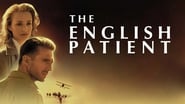mkelly54
The most impressive aspect of The English Patient is its devotion to the emotions, turbulence and tragedy of the time, World War II. With the world turned upside down by a war and the end of Europe's royal class, viewers are taken on a visually stunning journey of love, betrayal, constant loss and the ever-so-slow passing of the central character, Count Laszlo de Almasy, brilliantly played by Ralph Fiennes. Many reviewers term this a "reader's movie," and so it is. It's also a movie of the visual and musical arts, with scenes throughout the work stretching the bounds of fixed concepts. I often listen to the soundtrack by Gabriel Yared, with wide swaths of themes reveling in the adventures of archeologists in the Sahara and discoveries of Italian monastic art. Countering the classic themes are popular jazz and big band pieces from the 1930s and 40s, with de Almasy renowned for knowing the lyrics to every piece from the era. The characters throughout the story are classic, which weaves an enduring tableau of emotions, memories and the realization that as much as many view each era as different, there is always a sense of the retelling of stories, best stated with Casablanca's song, As Time Goes By. Lastly, there's a simple reason The English Patient earned nine Oscars, including Best Picture and Best Director for Anthony Minghella: It's one of the best movies of all time.
Gabriel Yared, composer and wide range of popular pieces from the 1930s and 40s.
pacoh1969
I completely agree with other comments here: hopelessly romantic, filmed in a similar pace to the original writing, wonderful panoramic scenes, nice romantic theme throughout and steeped in steeped in pseudo-historical reference. But ultimately a cinematic disaster with so many mistakes, technical and cinematic errors, which is why it is often a bye-word for disaster amongst cinema lecturers and students. And still it won 9 Oscars, including: -Best Picture Saul Zaentz -Best Director Anthony Minghella (before cutting off Caravaggio's fingers, one of the German officers asks in German "what about the Geneva Convention?" which is curious considering that the Geneva Convention on the Treatment of Prisoners wasn't signed until 1949 and came into effect in 1950) -Best Cinematography John Seale (despite crew or equipment or shadows of same being visible in almost every filmed scene) -Best Art Direction-Set Decoration Stuart Craig Stephenie McMillan (US flags in 1942 would not have 50 stars but 48) -Best Costume Design Ann Roth (despite US soldiers wearing Russian WWII army helmets and 3 German officers wearing conflicting badges and rank insignia (one being a Waffen SS officer, none of whom served in North Africa)-Best Sound Walter Murch Mark Berger David Parker Christopher Newman (despite thunder incorrectly and unnaturally added to a sequence of a thunderstorm, and the flash, bang and shock-wave of an exploding bomb being experienced simultaneously at a distance) -Best Film Editing Walter Murch (Despite 3 scenes being sequenced incorrectly in the final movie)One must ask why Ondaatje/Minghela were so sadistic? An apparently injured (terminally) pilot is found with horrific burns in North Africa (Libya?)) and is carried by road to Egypt where he is put on a hospital ship and transported to Sicily and proceeds to follow the front line up through Italy until a Canadian nursing officer takes it upon herself to leave the convoy to save the patient any discomfort etc etc WHEN IT WOULD HAVE BEEN EASIER TO simply place the patient on board the hospital ship in Tobruk or one of the many functional Allied ports in North Africa and send him directly back to Britain (as they thought he was English)...seems a little mean to the poor guy? The scriptwriter should have known that Ethiopia is not, as Katherine observed, in North Africa...tsk tsk! A disaster if a movie it may be, but it still strums the heart-strings....gets a tear every time...and I must have seen it 15 times in all
laker64
Shame that the Binoche character was not more in the character of a 1930's Canadian from Montreal as most Montrealers of the era did not speak English at all and if they did, it was with a distinct French- Canadian accent. Binoche speaks French and it would have been a breeze to allow her to do it even if it was only a French accent minus the Canadian touch. Willem Dafoe could also have done a Montreal accent and why David, (English) and Carraviggio, Italian ? Where all those flashbacks really necessary? Maybe it was the producer's intent to require multiple viewings in order to get the whole story. How could anyone actually have considered Demi Moore in the K part? Nicole Kidman possibly but KST pulled it off perfectly. The casting was part of the genius of the film.
Humphreywashere
The extramarital affair of two rich pompous and pretentious people who indulge in their own delights whilst others fulfil their duty to the war on the frontline, is the centre to this story. They are an utterly boring pair, especially the English patient himself, who proudly proclaims "I do not bargain (with the local market merchants)" in a disdainful tone. They are a construct always speaking as if they are reciting pretentious poetry. The historical chronicles of Herodotus are referred to by the pair repeatedly as if to remind the viewer that these people are oh so learned. When playing spin the bottle with others singing funny songs and having fun around a campfire, the female protagonist (the only woman in the company of about 5 men) recites a boring story of Gyges lusting for Candaules and her nakedness. That's when we first glimpse her narcissism and flirtatious personality.The most preposterous part is when our poetic lovers are stranded in the desert due to a plane crash involving the grieving husband. As she is injured, and her husband lies dead, her besotted lover leaves her alone with a flashlight and her precious Herodotus in a cave in the middle of the desert and walks to get help. Yes, that's right. With an ankle fracture her fate is sealed when he leaves her alone, whilst he embarks on a 3 day journey through the desert to return with a car. He is unsuccessful (there is a war after all). After a substantial period of time, he returns to the cave. Her body would be either desiccated or bloated, yet she is shown as fresh as the moment he left her when he lifts her in his arms and puts her in a plane again. Taking off, he crashes again in the desert and is burned to near death, but taken by passing Arabs to a hospital (through the desert again). A nurse, abandons her duties to wounded soldiers to feed and administer morphine repeatedly to this one selfish man for a substantial period of time, and she is portrayed as an angel.This movie sentimentalises and romanticises war. The love story is puerile and gross. I think lovers of cinematography might like it.






